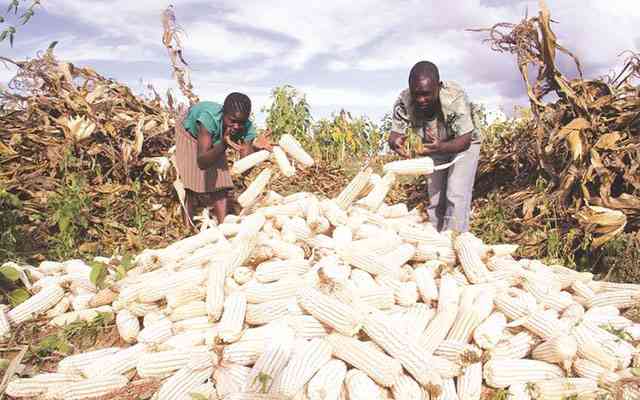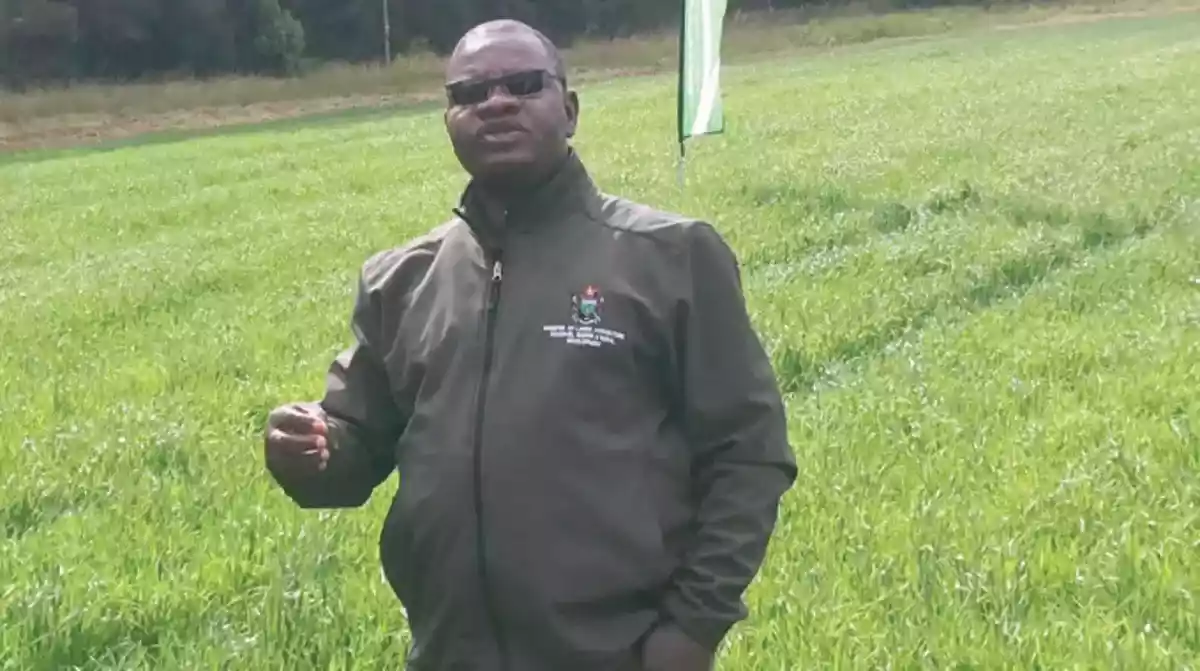
Maize is not only Zimbabwe’s staple food but the agricultural commodity has attracted policy attention due to its strategic importance to the economy. Consumed as roast, boiled and cooked mealie meal, maize is the most grown crop in Zimbabwe and consumed in different forms and recipes.
Trends
On 8th of May 2023 Government of Zimbabwe gazetted S.I 56 of 2023 giving regulations on the sale of maize. The statutory instrument imposes several restrictions on acquisition and disposal of maize, transportation and contracting. however, there is a different reality on the ground. A three-day field visit to Gokwe South from 1st of June to 3rd of June revealed something divorced the law and rhetoric.
Firstly, the statutory instrument clearly attempts to eliminate so called ‘middle men’ in the acquisition and disposal of maize as a strategic grain but the snapshot survey revealed that it is business as usual for many ‘players’ in the maize industry in Gokwe South. From Manoti, Mateta, Ngomeni, Gawa, Nyaradza, Gwehava Business centres one can evidently see stacks of maize waiting to be transported either to the Grain Marketing Board (GMB) where it fetches a higher price or to private millers mainly those in the production of animal feeds and processed cereals.
I estimated over one hundred and twenty tonnes of maize stacked in grocery stores, verandas and backyard shades in the six business centres. On inquiry, I learnt that small scale farmers are selling their maize at a paltry $2.50 to $3.00 per 20litre bucket.
This translates to approximately US$180/tonne. The same 20 litre bucket of maize is selling between US$5 to US$6 in urban areas like Kwekwe, Gweru, Kadoma and Harare while extreme low rainfall areas such as Silobela and other areas are buying upto US$7 per bucket. I gathered a few reasons why farmers are not eager to sell to GMB despite a better offer double the price of middlemen:
Farmers would rather have less but guaranteed payment to attend immediate pressing issues such as school tuition, examination fees for their children, emergency medical costs etc. unlike large scale commercial farmers, the subsistence and small-scale farmers look have limited cash income streams to support family expenses.
Farmers shun away from Zimdollar payments and more satisfied with US dollar denominated payments.
- Deputy minister in GMB theft scandal
- Private sector makes inroads into wheat production
- Deputy minister in GMB theft scandal
- 5 million people food insecure: WFP
Keep Reading
High costs of grain transportation to the nearest GMB selling point attributable to bad roads and limited options. Only large volumes of maize grain make economic sense for long distance transportation and marketing.
Movement restrictions by the GMB and police makes transportation of maize grain an enterprise of a few courageous, elites, bribe payers or politically exposed persons. S.I 53 of 2023 allows a maximum of 5 bags of maize from one place to the other. Excess quantity requires necessary authorization or risks confiscation.
Perspectives
Public concern surrounds the free movement of bulk maize from one place to another despite standing restrictions. Are some animals more equal than others? Or are there existential loopholes in the system exploited by cunning individuals. Individuals who never knows little to nothing about growing maize, individuals who extract money from poor rural communities and lavishly spend it in their urban residents and lifestyle.
At the tail end of the ecosystem, and shouldering the pain and suffering is the rural small scale farmer whole livelihood remains in a deplorable state. Below a few policy suggests towards improving the maize value chain and overall food security in Zimbabwe.
- Address gender imbalances in agriculture.
Women have limited access to basic agricultural resources (land, livestock, education, financial services, extension, technology, inputs and services and to rural employment opportunities) yet they carry a heavier responsibility of feeding families. Information about markets and strategies to penetrate those markets on a sustainable basis is a big challenge for women. Women remain largely excluded from the decision-making processes within the public and private spheres, posing a major challenge for them to participate in the national development process. Gender responsive and gender sensitive policies and practices are an imperative to economically reward women maize producers.
- Expand the provision of agricultural finance
Finance is key to enabling effective demand for improved inputs that can enhance performance of agriculture, such as infrastructure, machinery, fertilizer, seeds, and chemicals. Thus, Zimbabwe will need to catalyze internal and external financial sources for farmers to enhance the use of advanced inputs in agriculture. The government, through its Ministry of Lands and Resettlement, and the Bankers Association of Zimbabwe should facilitate the offering of bankable permits and leases to enable farmers to access finance, as mentioned earlier.
- Agricultural support institutions strengthening
Supportive institutions (public and private agencies, associations of farmers and other intermediaries) responsible for training, research, extension, marketing, credit, and regulatory functions will need resources to enable them to deliver service. Critical human resources and funding for operations, infrastructure, and equipment need to be availed to facilitate delivery of services. The government should commit 10 percent of its national budget to agriculture, as endorsed in the Comprehensive Africa Agriculture Development Programme (CAADP) roadmap , to contribute toward strengthening agricultural support institutions for better service delivery.
- Strengthen farmer capacity to manage farming as a business.
Traditional smallholder farmers have been oriented toward subsistence and mixed farming, and if maize continues to be grown under this traditional model, this may not ensure achievement of set objectives of food security and improved household incomes. Unfortunately, the Pfumvudza model entrenches this subsistence model giving little prospects for rural small-scale farmers to transform their livelihoods for the better through improved incomes.
To maximize crop production benefits, there a change of the mindset of farmers and government should be induced so that they would consider maize as a commercial crop. For this to happen, there is a need for provision of effective agricultural training and extension to smallholder farmers (communal and A1) and government officers (policy makers) on good agronomic practices, economics of production, intensification of agriculture, and farming as a business. The government, in its effort to support maize production for food security, will need to consider a holistic approach to complement the subsidy program through strategies presented above, including land, human capital, supportive institutions, climate resilient strategies, and so forth.
Post-harvest management
Zimbabwe has enjoyed some years of bumper harvest but followed by tragic drought seasons. Innovative approaches for curbing post-harvest losses in maize production are a necessity. Post harvest losses are great concern as they include loss of all the other resources that went into production of the food (fertilizers, pesticides, labor, and machinery wear and tear). Zimbabwean farming communities have traditionally embraced the concept of micro-grain storage facilities through a number of techniques. A lesson or two can be drawn from the biblical Joseph who managed seven years bumper harvest to live through seven years of severe famine. The famine became an economic opportunity for the biblical Egypt. The following suggestions are proffered:
- Build standard well maintained storage facilities
- Invest in preservation pesticides
- Limit freebies in good rainfall seasons except for unavoidable needs of the elderly, orphaned and vulnerable children and people with disability.
- Promote household level good post-harvest management practices to ensure sustained food security.
The story and experiences of Gokwe South district only provides a snapshot of lived realities across Zimbabwe. What have been your individual and community experiences? How well has Zimbabwe lived up to the 2025 vision for Africa’s agriculture of ‘shared prosperity and improved livelihoods’? and the commitment to halving poverty by 2025 through inclusive agricultural growth and transformation?
- Maketo is an economic justice specialist and works with Zimbabwe Coalition on Debt and Development and Fight Inequality Alliance Zimbabwe. He writes in his personal capacity. The views expressed in this article are not of any organisation associated with him. — [email protected]. These weekly New Perspectives articles, published in the Zimbabwe Independent, are coordinated by Lovemore Kadenge, an independent consultant, managing consultant of Zawale Consultants (Pvt) Ltd, past president of the Zimbabwe Economics Society and past president of the Chartered Governance & Accountancy Institute in Zimbabwe (CGI Zimbabwe). — [email protected] or mobile: +263 772 382 852.






